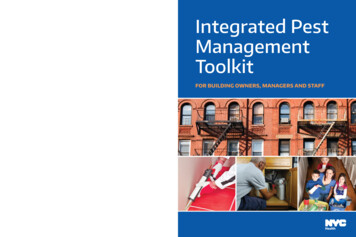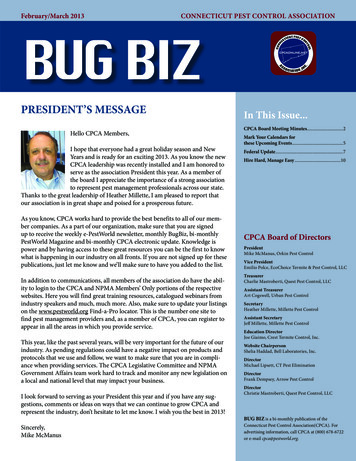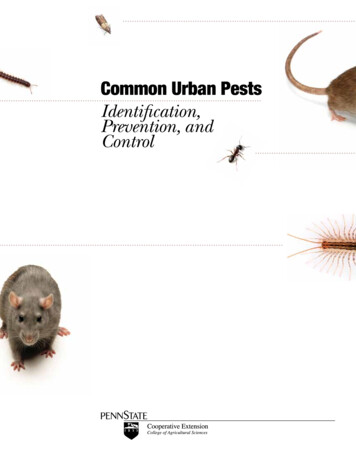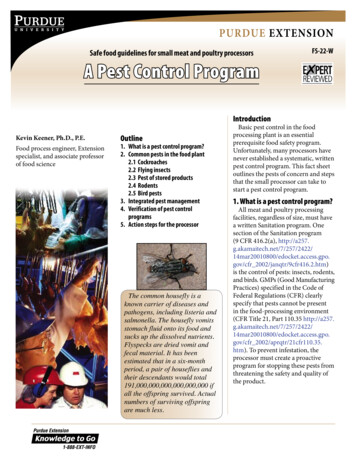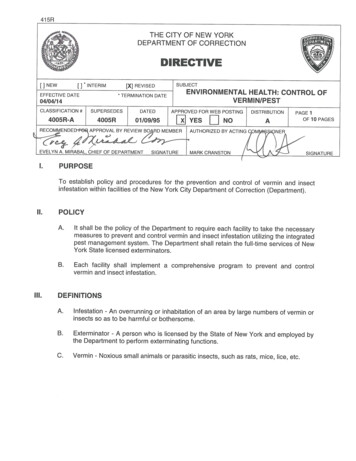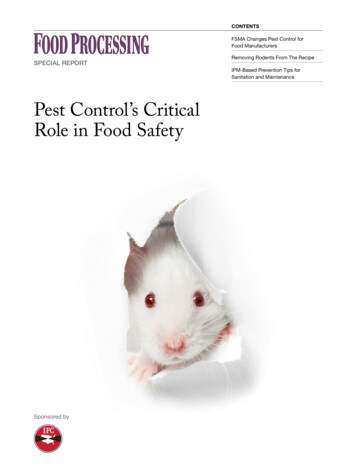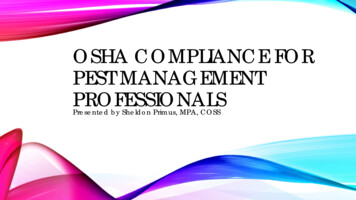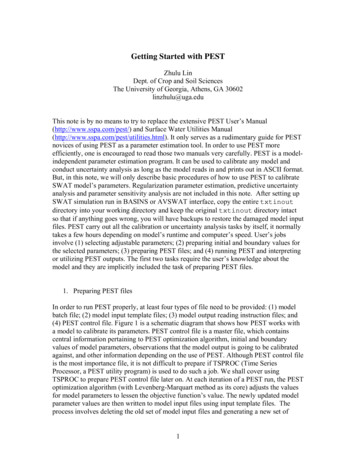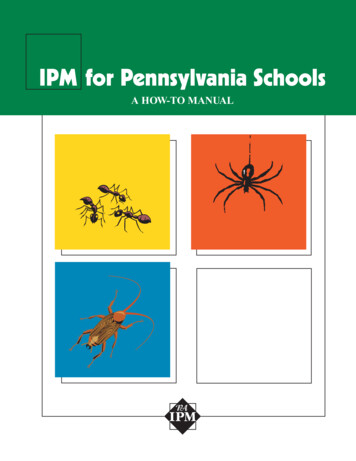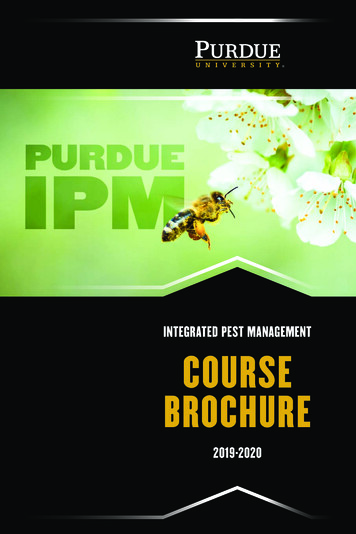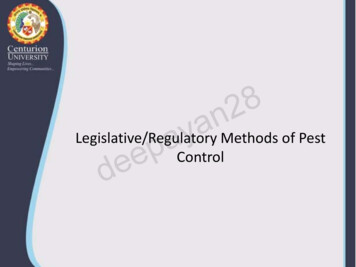
Transcription
yape82naLegislative/Regulatory Methods of PestControled
Legislative/Regulatory Methods of Pest ControlSome of the Exotic pests introduced into our country are1. Potato Tuber Moth Pthorimea Operculella2. Cotton Cushiony Scale Icerya Purchasi3. Wooly Aphis On Apple Eriosoma Lanigerum4. San Jose Scale Quadraspidiotus Perniciosus5. Golden Cyst Nematode Globodera Rostochinesis6. Giant African Snail, Achatina Fulica7. Serpentine Leaf Miner Liriomyza Trifolii8. Spiralling Whitefly, Alerodicus Dispersus9. Coconut Mite, Aceria Guerreoronis Etcyapeed82naQuarantine: derived from Latin word Quarantum which means ‘forty (40)’Plant quarantine is defined as the legal enforcement of the measures aimed to prevent pestsfrom spreading or to prevent them to multiply further in case they have already gained entryand have established in new restricted areasimportance of imposing restrictions from one country to another was realized when The grapevine phylloxera got introduced into france from america by about 1860 The san jose scale spread into USA in the later part of the 18th century and caused severedamage
The first Quarantine Act in USA came into operation in 1905Govt. of India passed an Act in 1914 entitled “Destructive Insect and Pests Act of 1914” toprevent the introduction of any insect, fungus or other pests into our countryThe legislative measures in force now in different countries can be grouped into five classes 1) Legislation to prevent the introduction of foreign pests: 82naTo prevent entry of foreign pests all countries have restrictionsDirectorate of Plant Protection Quarantine and Storage (DPPQ&S) was established inFaridababd in 1946From 1949, DPPQS deals with commercial import of grains, plants and plant productsIt has a network of 35 Plant Quarantine Stations spread across the country includingseaports, airports and land frontiersoperate under the provisions made under the “Destructive Insect and Pests Act of 1914”Government of India has approved NBPGR, New Delhi for quarantine processing of allgermplasm including transgenic planting material under exchange for research purposesForest Research Institute(FRI), Dehradun for forest plantsBotanical Survey of India (BSI), Kolkatta for ornamental plants to enforce quarantine lawsedyapePhytosanitory certificate- The consignment should also be accompanied with the certificateissued by the Officers of agriculture department of the exporting country so as confirm that theconsignments are pest free
2) Legislation to prevent the spread of already established pests: The DIPA, 1914, have empowered the states to enact such laws as are necessary to preventthe spread of dangerous insects within their jurisdictionThe Madras Government enacted the Madras Agricultural Pests and Diseases act in 1919and was the first state to enact such laws in our countryTo prevent the spread of pests or diseases or weeds form one part of the state to anotherCottony cushiony scale when localized in Nilgiris and Kodiakanal none of the alternate hostplants were permitted to get transported from these areasQuarantine stations were opened at Mettupalayam and Gudalur of Nilgiris and atShenbegmur station of Kodaikanal in 1943 and were closed subsequentlyyape82na3) Legislation to enforce the application of effective control measures to prevent thedamage by established pests edUnder the state pests act, the farmers were asked to remove and destroy coconut leaf letsinfested with black headed caterpillar Opisina arenosella around Mangalore in 1923 and in1927 in Krishna and Guntur districts4) Legislation to regulate the activities of men engaged in pest control operations:They have to take certain precautionary measures to avoid pesticide poisoning and undergoregular medical checkup
5) Legislation to prevent the adulteration and misbranding of the insecticides To avoid malpractices and supply of substandard chemicals, the pesticide products are to bestandardized through the Indian Standards InstituteSuch products carry ISI mark and are expected to confirm the level of a.i (Activeingredient)The Insecticide Act, 1968 has been enforced on 2nd September, 1968 by the Government ofIndia to regulate the import, manufacture, sale, transport and distribution and use ofinsecticidesThe government of India also constituted the Central Insecticide Board (CIB) to advise thestate and central governments as per this actThe insecticide rules of 1971 framed under the Insecticides Act 1968 had come in to force in1971edyape82naInvasive Alien Species (IAS): is a species outside of its native range whose introduction and orspread threatens biodiversity
3) Legislation to enforce the application of effective control measures to prevent the damage by established pests Under the state pests act, the farmers were asked to remove and destroy coconut leaf lets infested with black headed caterpillar Opisina arenosella around Mangalore in 1923 and in 1927 in Krishna and Guntur districts

